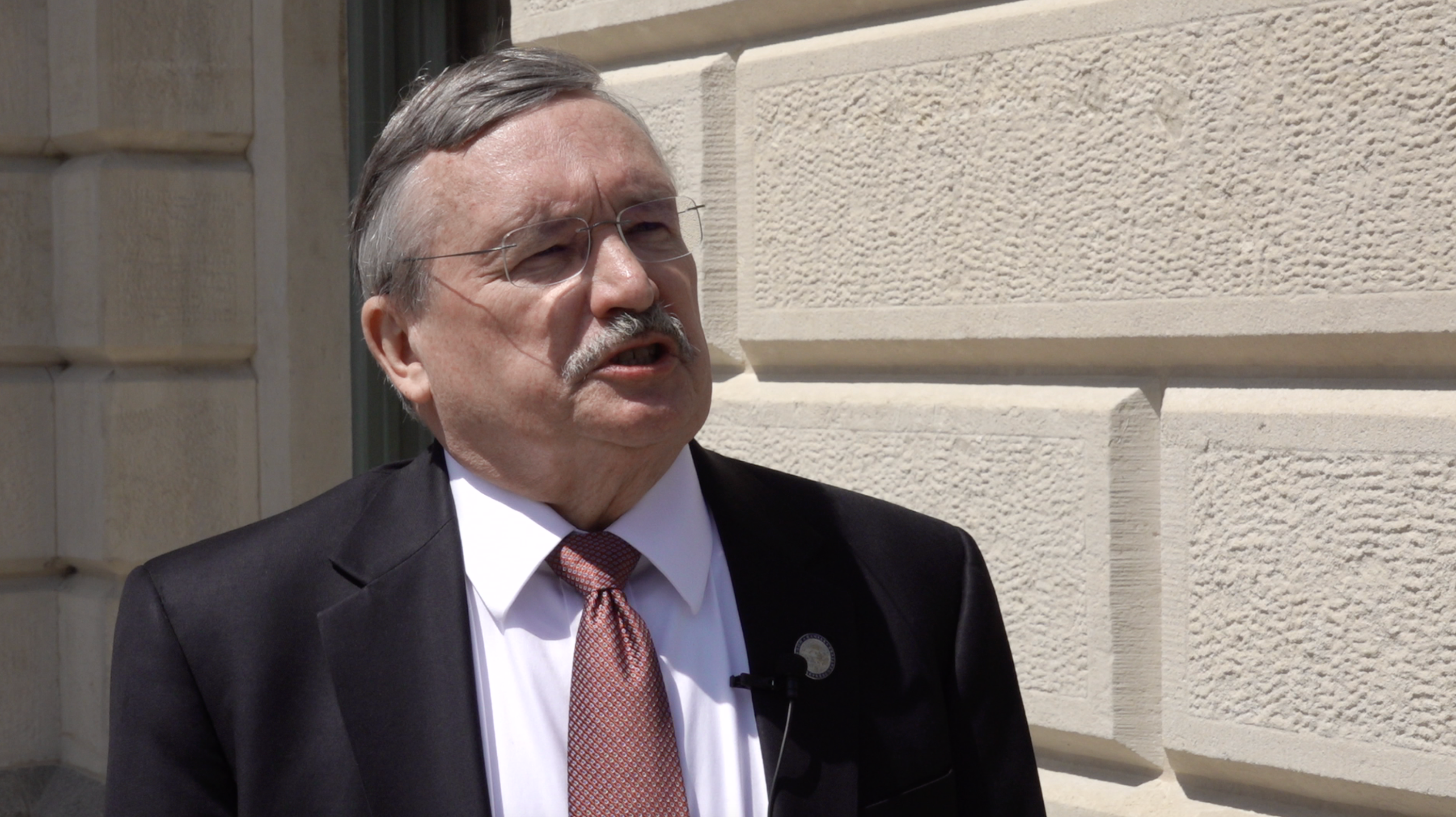Situation PREVIEW
on Apr 25, 2022
at 7:36 pm

On Tuesday morning, the Supreme Court will hear oral argument in Biden v. Texas, in which the justices will choose whether the Biden administration will have to carry on to enforce a Trump-era system identified as the “remain in Mexico” policy, which involves asylum seekers to continue to be in Mexico though they wait for a hearing in U.S. immigration court.
The justices have had in depth experience with the plan, formally known as the Migrant Security Protocols, given that the Trump administration declared it in 2018. In March 2020, the court allowed the Trump administration to start out enforcing the plan after a federal district judge in California blocked it. In Oct 2020, the Supreme Court docket agreed to evaluation a ruling by the U.S. Courtroom of Appeals for the 9th Circuit keeping that the coverage was possible inconsistent with both of those federal immigration regulation and international legislation, but the justices dismissed that situation in June 2021 following the Biden administration ended the policy – or, at minimum, attempted to finish it.
Critics of the coverage say that it forces asylum seekers to reside in risky and unsanitary camps in Mexican border towns. Supporters say that it helps prevent large quantities of noncitizens from entering the United States based on doubtful asylum promises.
The most up-to-date spherical of lawful wrangling started when Texas and Missouri challenged the Biden administration’s first effort and hard work to rescind the plan. That exertion, they contended, violated both federal immigration law and the federal law governing the strategies that federal organizations must observe.
U.S. District Decide Matthew Kacsmaryk agreed with the states and purchased the Biden administration to reinstate the policy. Immediately after the U.S. Court docket of Appeals for the 5th Circuit declined to block Kacsmaryk’s ruling, the Biden administration went to the Supreme Court docket final August, trying to find unexpected emergency reduction. More than the objection of Justices Stephen Breyer, Sonia Sotomayor, and Elena Kagan, the court refused to step in and put Kacsmaryk’s buy on hold. As a outcome, the Biden administration was expected to resume enforcement of the plan though litigation ongoing in the lower courts.
On Oct. 29, the Section of Homeland Safety issued a new selection ending the plan, supported by a 38-website page memorandum that spelled out that final decision. The memorandum acknowledged the arguments for retaining the application, but it concluded that all those “benefits do not justify the costs.” The 5th Circuit, nevertheless, upheld a district-courtroom purchase demanding the Biden administration to proceed the policy, keeping that the explanation to begin with offered in June 2021 for ending the policy had been insufficient.
The Biden administration returned to the Supreme Court docket in late December, asking the justices to make a decision no matter if federal immigration legislation calls for the administration to keep the plan and regardless of whether the Oct. 29 conclusion to finish the plan has any lawful outcome. And mainly because of the “importance of the case and the magnitude of the nationwide injunction’s ongoing interference with the Govt Branch’s conduct of immigration and international coverage,” the Biden administration urged the justices to make a decision the case throughout the 2021-22 time period – which the court docket agreed in February to do, rapidly-tracking the circumstance for oral argument.
The administration’s arguments
The Biden administration tells the justices that the 5th Circuit “relied on novel and erroneous interpretations of” federal regulation “to compel DHS to maintain in perpetuity a discretionary border-administration program that the politically accountable Executive Branch has 2 times decided to be opposite to the interests of the United States.” As an first subject, the administration argues, the court of appeals was improper when it held that federal immigration regulation requires DHS to return asylum seekers to Mexico anytime it are not able to detain them. The legislation at the heart of this scenario precisely presents that DHS “may” return asylum seekers to Mexico or Canada whilst they wait for a listening to, which offers DHS discretion.
Also, the Biden administration contends, when Congress passed the law, it was totally mindful that the federal government did not have the potential to detain even a portion of the noncitizens who check out to enter the United States each individual year, but there is no sign that it nevertheless intended to demand DHS to “return hundreds of countless numbers of land-arriving noncitizens to Mexico or Canada owing to a absence of detention area.” But if the 5th Circuit’s interpretation of the regulation were being accurate, the administration adds, every presidential administration considering that 1996 – which includes the Trump administration in advance of it adopted MPP – would have been in violation of the regulation.
The 5th Circuit’s reading through of the law also impinges on the govt branch’s powers under the Constitution to regulate the border and overseas coverage, the administration argues. It involves the United States to deliver migrants into Mexico, which in flip calls for the consent of (and, a lot more normally, cooperation from) the Mexican authorities.
The court of appeals is also incorrect, the Biden administration carries on, to maintain that the Oct. 29 memorandum terminating MPP has no authorized outcome and as a result does not, as the district court docket directed, terminate MPP in compliance with the federal regulations governing administrative companies. The Supreme Courtroom has described, the administration states, that when a court docket concludes that an agency’s rationalization for an action is inadequate, the company “may either elaborate on its prior explanations or problem a new final decision.” In this circumstance, the administration reasons, just after having a new seem at the challenge, DHS issued a new determination that supplied new motives for the selection to conclusion MPP. Also, the administration notes, Secretary of Homeland Protection Alejandro Mayorkas made obvious precisely what he was executing, declaring in his Oct. 29 conclusion: “I am hereby terminating MPP. Successful instantly, I hereby supersede and rescind the June 1 memorandum.”
The truth that DHS experienced declared on Sept. 29 that it prepared to concern a new memorandum ending MPP does not indicate that it had prejudged the difficulty, the administration emphasizes. By the time DHS produced the announcement, it had previously used months reconsidering the problem – and, compared with the Oct. 29 memorandum, its announcement was not in any occasion a last conclusion.
Arguments of Texas and Missouri
Texas and Missouri counter that the Biden administration can not terminate MPP simply because performing so would violate its obligations below federal immigration law. Even if the federal government does not have the potential to keep all asylum seekers who arrive at the U.S. border, the states create, Congress has provided DHS three options that permit it to comply with federal regulation: DHS can detain the asylum seekers it can decide whether or not to briefly allow for them into the United States on a case-by-situation foundation or, for asylum seekers who arrived by land, it can return them to the nations around the world from which they tried out to enter the United States. But DHS will have to pick out a single of people options, the states say. Thus, even though federal immigration regulation gives DHS the discretion to decide no matter if to return asylum seekers to Mexico or Canada though they wait for a listening to, the states purpose, that discretion is simply one of DHS’ choices.
Ending MPP, the states say, does not tumble into any of those categories. Instead, DHS seeks “the power to launch lessons of aliens into the United States en masse.” In addition, the states incorporate, for almost a century, “detention has been the solid norm” releasing asylum seekers into the United States to hold out for their hearing has been “the exception.”
The states dismiss the Biden administration’s recommendation that requiring DHS to reinstate MPP would interfere with U.S. overseas relations, particularly with Mexico. The states anxiety that Congress also has a role in overseas policy, as well as the power to move immigration rules. And in any occasion, the states be aware, the government’s placement on the impact of MPP has been inconsistent: DHS (under the Trump administration) had earlier decided that ending MPP would interfere with U.S. international relations.
The states urge the justices to uphold the 5th Circuit’s ruling that Oct. 29 memorandum has no authorized influence, so that DHS continue to has not properly ended the plan. But even if the justices were to consider the Oct. 29 memorandum, the states contend, it was just an right after-the-actuality exertion by DHS to justify its June conclusion to conclusion MPP, without any support in the history to exhibit that DHS engaged in an “authentic reconsideration” ahead of generating that determination. “An common onlooker,” the states recommend, “would no longer presume that” DHS “hewed to the administrative straight and slender.” Somewhat, the states conclude, DHS’ “conduct demonstrates that the administration has always supposed to terminate MPP, no matter of any impediments to that result.”
Arguments of other states and interest groups
In addition to Texas and Missouri, 36 other states and the District of Columbia have also weighed in, in two opposing “friend of the court” briefs. Led by Illinois, 17 states with Democratic lawyers common and the District convey to the courtroom that they “welcome immigrants into the communities for the reason that immigrants contribute to their economies and their civic lifetime.” If the 5th Circuit’s choice is upheld, they alert, it would “acutely harm” both the states and the members of their communities who have relied on programs enabling asylum seekers to be introduced into the United States even though they wait for a listening to.
Indiana and 18 other states, by distinction, decry the “significant costs” that illegal immigration imposes on them – all the things from education and learning to well being care, together with the “human costs to susceptible populations from human trafficking and drug smuggling.” They urge the justices to go away the 5th Circuit’s ruling in put, citing their “strong interest in making sure that, ahead of ending” MPP, DHS “properly considers (and accounts for) the consequences for states and their citizens, which did not come about listed here.”
The district court’s order demanding the Biden administration to continue on the coverage applies all over the region. Noting that two justices – Clarence Thomas and Neil Gorsuch – have recommended that this sort of injunctions, which have grow to be progressively preferred in latest many years, “may be unconstitutional,” the Centre for Immigration Law and Plan at UCLA School of Legislation argues that the injunction is “out of all proportion to the restricted, consequently-much-unrealized financial harms alleged by” Texas and Missouri. Even if the Supreme Courtroom finally agrees with the deserves of Texas and Missouri’s claims, the centre contends, it really should make clear that its ruling would only prohibit the Biden administration from terminating MPP in Texas and Missouri. Tuesday’s argument should offer extra perception into the justices’ considering on nationwide injunctions and the other arguments manufactured by the events and their supporters.
This report was at first released at Howe on the Courtroom.


